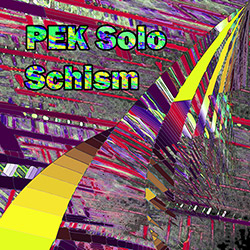
Approaching his solo work with new compositional strategies, multi-reedist and percussionist David Peck uses time and texture as the principal organizational elements in 9 pre-mixed recordings over which PEK was allowed more flexibility and freedom in instrumental choice during performance, using a vast collection of instruments in dramatic improvisations.
In Stock
Quantity in Basket: None
Log In to use our Wish List
Shipping Weight: 3.00 units
EU & UK Customers:
Discogs.com can handle your VAT payments
So please order through Discogs
Sample The Album:
David Peck (PEK)-clarinet, piccolo, contralto clarinet, contrabass clarinet, sopranino, soprano, bamboosoprano, alto saxophone, tenor saxophone, baritone saxophone, bass saxophone, guanzi, mussette, English horn, tarota, bassoon, contrabassoon, bass tromboon, recorders, C flute, alto flute, bamboo flute, Christmas flute, sheng, melodica, accordian, [d]ronin, bass guitar, mallet kat, moog subsequent, arp odyssey, Korg MS 20, theremin with moogerfooger, prophet synth, daxophone guzheng, yangqin, aquasonic, crank siren, game calls, Englephone, gongs, Tibentan bowls, brontosaurus bells, tank bells, crotatles, glockenspiel, thunder sheet, orchestral chimes, gongs, cymbells, trine, chimes, log drums, wood blocks, temple blocks, castenets, seed pod rattles, balafon, Ableton mixes
Click an artist name above to see in-stock items for that artist.
Label: Evil Clown
Catalog ID: 9246
Squidco Product Code: 29716
Format: CD
Condition: New
Released: 2020
Country: USA
Packaging: Digipack
Recorded live at Evil Clown Headquarters in Waltham, Massachutsus, in March and April, 2020.
"The other night I did the solo tracks for the new PEK Solo - Schism album I worked on during March and the first week of April...
I did all the solos in a massive 5 hour session last Thursday. The whole structure of this work is fundamentally different than my previous solo albums and other pieces performed in larger ensembles with computer accompaniment..
In the past I have taken samples from the Evil Clown catalog and specially recorded samples. I have then taken those samples and subjected them to digital transformations with audio editing software. I then combine those samples in the Ableton software. Once I have built these up into long album length mixes, I take several of them and create a full length Ableton program with multiple channels. In performance, I ride the faders and alternate between no prerecorded elements, one element, several elements or all the elements. Those decisions are made during the performance
The decision making during the performance is essentially the same as regular improvisation, with the shape of the piece determined in real time. I've been using Ableton to make these mixes for the last 3 years or so and I've become pretty proficient with the software. I like this process which is very efficient
When the corona virus fired up and I cancelled all of my planned sessions for March and April, it opened up a lot of time in the Evil Clown calendar... I decided to make a completely different structured solo work with Ableton. I have never really used traditional studio overdubbing as a means for creating my music
I started by making 9 different approximately 5 minute premixes, each featuring a different group of similar instruments and containing between 4 and 8 channels. I arranged them in a 79 minute sequence with plenty of space in between. Next I did two passes through the entire piece with different groups of instruments: the first pass with gongs, electronics and the [d]ronin, and the second pass with aquasonic, guzhen, yangqin and bass guitar. I added two recent full length Ableton mixes: one predominantly from contrabassoon samples and one predominantly from contrabass clarinet samples. I made a mix with all of these sources and then I used that as the accompaniment track for the solos
I made a list of all the different sections earlier in the week. I assigned different instruments in groups to the different parts of the work in the small (less than 5 minutes) sections. Thursday, I used this map to record 5 minutes or so at a time, setting up the instruments and adjusting the recording settings between takes
As a consequence of the recording being spread across many occasions, I was free to draw on many more of the Evil Clown Arsenal of instruments than I typically use for a single performance. Here is the list of instruments (about 60) I played:
PEK - clarinet, piccolo, contralto & contrabass clarinets, sopranino, soprano, bamboo soprano, alto, tenor, baritone & bass saxophones, tarota, guanzi, mussette, English horn, bassoon & contrabassoon, bass tromboon, recorders, C flute, alto flute, bamboo flute, Christmas flute, sheng, melodica, accordian, [d]ronin, bass guitar, mallet kat, moog subsequent, arp odyssey, Korg MS-20, theremin with moogerfooger, prophet synth, daxophone, guzheng, yangqin, aquasonic, crank siren, game calls, Englephone, gongs, Tibetan bowls, brontosaurus & tank bells, crotatles, glockenspiel, thunder sheet, orchestral chimes, gongs, cymbells, trine, chimes, log drums, wood blocks, temple blocks, castenets, seed pod rattles, balafon, Ableton mixes
I found the experience strangely between my ordinary practice of pure improvisation (all recorded in real time) and my compositional practice when composing Frame Notation Scores for the Leap of Faith Orchestra. Both formats use time and texture as the principal organizational elements and involved transformations through a broad range of sonorites. Since I did not make multiple attempts for any of the many tracks and sections, all of the recorded material is used in the final product
I found several advantages to recording with this method:
1) For me, free improvisation is primarily structured by the phrasing and texture of sound produced by the musicians. When playing against previous tracks recorded by me, I am phrasing with myself, far simpler than reading phrasing cues from the other performers
2) I know what I performed on previous tracks, and make my decisions on instrumentation and general approach prior to each take, rather than in real time during performance
3) I can watch the wav forms on the monitor and see in advance when big events occur, guiding decisions on each overdub on lining up with previously performed events. There is a lot of this kind of coordination in the Frame Notation Scores
One odd consequence of this methodology is that unlike nearly every other Evil Clown project, the final steps are not done in a continuous fashion, but rather overdubbed. Therefore, I will not have a regular video of the performance. I decided to video record with my 4k camera and extract stills. The YouTube video with be sequences of these stills arranged with the music..."-PEK, 4/10/20
Artist Biographies
• Show Bio for David Peck (PEK) "PEK (aka David Peck) is a multi-instrument improviser who plays all kinds of instruments including saxophones, clarinets, double reeds, percussion, electronics and auxiliary sound making devices of all kinds. PEK was born in 1964 and started playing clarinet and piano in elementary school. In 7th grade he started saxophones, first on alto, then switching to tenor in high school. He spent 10 years playing in rock bands and studying classical and jazz saxophone with Kurt Heisig in the San Jose CA area before moving to Boston in 1989 to attend Berklee where he studied performance with George Garzone. While Berklee was an excellent place to study harmony, voice training and other important aspects of a conventional formal music training course of study, it was not a very good environment for learning contemporary (or pure) improvisation (apart from his work with George). PEK did find, however, that Boston had a thriving improvisation scene, and it was here that he developed his mature pure improvisation language. During the 90s, PEK performed with many notable improvisers including Masashi Harada, Glynis Lomon, William Parker, Laurence Cooke, Eric Zinman, Glenn Spearman, Raqib Hassan, Charlie Kohlhase, Steve Norton, Keith Hedger, Mark McGrain, Sydney Smart, Matt Samolis, Martha Ritchey, Larry Roland, Dennis Warren, Yuri Zbitnov, Craig Schildhauer, Keith Fullerton Whitman, Leslie Ross, Rob Bethel, Wayne Rogers, Eric Rosenthal, Taylor Ho Bynum, Tatsuya Nakatani, James Coleman, B'hob Rainey and George Garzone. PEK met cellist Glynis Lomon when they played together in the Masashi Harada Sextet which existed between 1990 and 1992. They developed a deep musical connection which they continued following the MHS; first with the Leaping Water Trio for a few years and then with the first version of Leap of Faith in 1994. Leap of Faith was very active in Boston from that time until 2001 and went through a series of several core ensembles which always included both PEK and Glynis. Other key Leap of Faith core members during this period were Mark McGrain (trombone), Craig Schildhauer (double bass), Sydney Smart (drums), Yuri Zbitnov (drums) and James Coleman (theremin). Leap of Faith was always a very modular unit with constantly shifting personnel and many different guests. The early Leap of Faith period concluded in 2001 with a dual bill at an excellent room at MIT called Killian Hall with George Garzone's seminal trio the Fringe. At this time, PEK changed careers for his day gig, returning to college for a computer science degree and beginning to work in the structural engineering industry at Simpson Gumpertz & Heger. He became far too busy to continue the heavy music schedule, and preferring not to do music casually, he entered a long musically dormant period. Flash forward to early 2014. PEK was a regular mail order customer of Downtown Music Gallery, the premiere specialty shop in Manhattan for free jazz, contemporary classical and other new music. While in New York on SGH business, he went down to DMG and had a lengthy conversation with proprietor Bruce Lee Gallanter about the early Leap of Faith period. He then sent Bruce a package of about 15 CD titles from the 90s and was pleasantly surprised when Bruce managed to sell nearly all of it. This public interest in the old catalog spurred PEK into getting back into performance. He reformed Leap of Faith with Glynis Lomon (cello, voice, aquasonic), Yuri Zbitnov (drums) and newcomer Steve Norton (clarinets and saxophones) and started to record and perform in early 2015. Now having access to financial resources always absent in the early period, PEK began to accumulate a huge collection of instruments both for himself and also to expand the palate of Leap of Faith and the other projects soon to follow. He acquired new recording equipment and many new saxophones, clarinets, double reeds, metal and wooden percussion instruments, electronic instruments, signal processing equipment and other sound-making devices from many cultures. He revived his old record label, Evil Clown, and created reissues and new releases for much of the early period work by Leap of Faith and many of his other projects to sell at shows, DMG and the internet (around 100 archival titles). The Arsenal of equipment has a grand purpose: To establish a large scale aesthetic problem to use the instruments to make long form broad palate improvisations with dramatic transformation and development. The very broad palate enables the long improvisations to evolve with very different movements and pronounced development over their length. PEK started the Leap of Faith Orchestra, a greatly expanded Leap of Faith, to achieve this purpose along with a number of smaller ensembles which are sub-units of the full orchestra including String Theory (focusing on orchestral strings), Metal Chaos Ensemble (focusing on metallic percussion), Turbulence (horn players), Mekaniks (electronics) and Chicxulub (space rock). In all, the Evil Clown roster includes over 40 musicians who contribute to one or more of the various projects, with PEK participating in all of them. Leap of Faith has also had some special guests like Steve Swell (trombone), Thomas Heberer (trumpet), Jeremiah Cymerman (clarinet) and Jim Hobbs (alto sax). The Leap of Faith Orchestra happens whenever several of these groups play together at the same time, or the ensemble exceeds 7 or 8 players. The Full Orchestra is a special case discussed below. The current roster is comprised in part of: - Core Leap of Faith: PEK, Glynis Lomon, Yuri Zbitnov (Steve Norton has since left to go to Graduate School) - Percussion: Andria Nicodemou (vibes), Kevin Dacey (perc), Joe Hartigan (perc), Syd Smart (drums) - Strings: Jane Wang (cello), Clara Kebabian (violin), Tony Leva (bass), Mimi Rabson (violin), Kirsten Lamb (bass), Brendan Higgins (bass), Silvain Castellano (bass), Rob Bethel (cello), Kit Demos (bass), Matt Scutchfield (violin), Helen Sherrah-Davies (violin) - Piano: Eric Zinman, Peter Cassino, Emilio Gonzales - Horns: Dave Harris (tuba, trombone), Charlie Kohlhase (saxes), Bob Moores (trumpet), Sara Honeywell (trombone), Forbes Graham (trumpet), John Baylies (tuba), Dan O'Brien (woodwinds), Zack Bartolomei (woodwinds), Kat Dobbins (trombone), Steve Provizer (trumpet, baritone horn), Matt Samolis (flute) - Electronics: Greg Grinnell, Jason Adams (electric bass, electronics) - Guitar: Dru Wesely, Grant Beale, Chris Florio - Voice: Dei Xhrist Evil Clown is documenting the ongoing solutions to this aesthetic challenge by creating limited CD editions and digital download albums of every performance and studio session by this array of ensembles. Interested audience can track the development of the grand scale project over the many releases - over 80 albums recorded and released so far between Jan of 2015 and March of 2017. All of the bands are highly modular, changing personnel and instrumentation with each meeting. The result is an enormous amount of music that shares the same fundamental improvisational language but differs from event to event greatly both in sonority (overall sound) and specific detail. For the full Leap of Faith Orchestra, PEK composes a graphic notation score to guide the improvisation. The full Orchestra is comprised of roughly 20 players from the roster and performs twice a year. Two performances have occurred to date - The Expanding Universe in June of 2016 and Supernovae in November of 2016. Composition for Possible Universes is completed and the work will be performed on May 28, 2017 with another performance (score not yet begun) scheduled for November. The scores use a device called Frame Notation where written English descriptions of the overall sonority desired and simple graphic symbols are given durations for each player on their part along with direction on when to play and when not to play. The directions are put in little boxes called frames which are arranged on a timeline and are simple enough to be immediately understood by the performers. Horizontal lines, called Duration Bars, extend across the page indicating when each Event (the Frame + the Duration Bar) begins and ends. An Event can be intended for the full ensemble, a defined group within the ensemble (for example, Metal Chaos Ensemble), a custom group (for example, Tubas), or an individual (for example, Andria Feature). Parts are the full score annotated with Hiliters so that each player's instructions stand out. They can clearly see their individual instructions, but can also see the big picture, enabling far more knowledge about the pending actions of the rest of the ensemble than typical in pure improvisation. The players track the elapsed time on a very large sports clock. There is no melodic, harmonic or rhythmic information specified. This system allows PEK to compose detailed Ensemble Events without having to notate pitches or rhythms which would require significant rehearsal to accurately achieve." ^ Hide Bio for David Peck (PEK)
7/1/2025
Have a better biography or biography source? Please Contact Us so that we can update this biography.
Track Listing:
1. Schism 01:18:07
Improvised Music
Free Improvisation
Electro-Acoustic
Electro-Acoustic Improv
Boston Area Improvisers
Solo Artist Recordings
Recordings by or featuring Reed & Wind Players
Evil Clown 2025 RSD Sale
Search for other titles on the label:
Evil Clown.


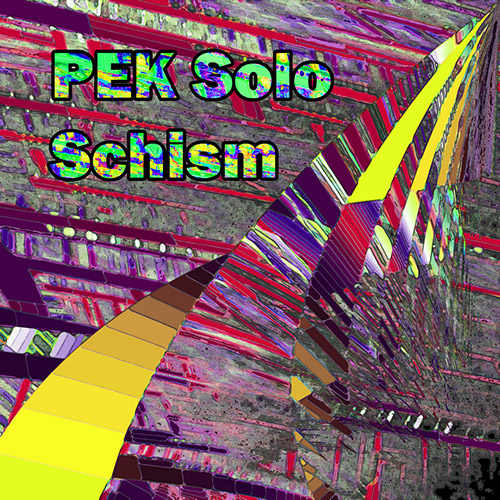

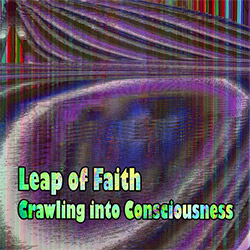
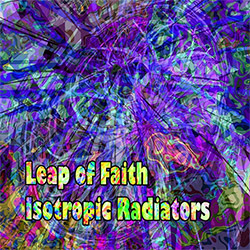

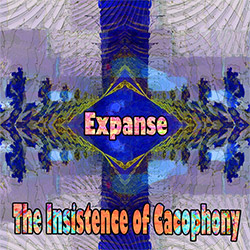
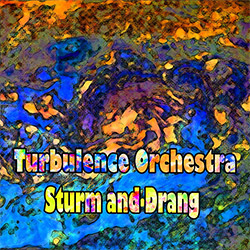
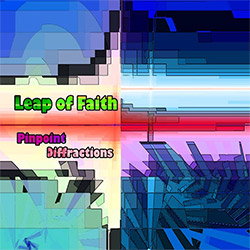
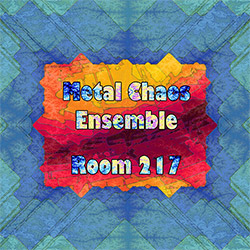
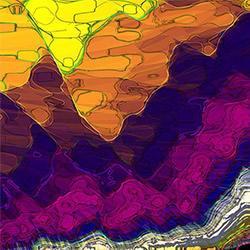
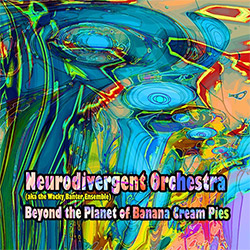
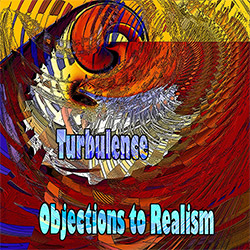
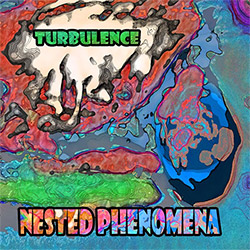
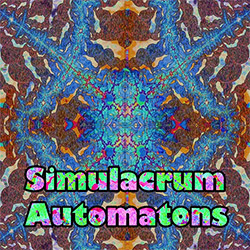
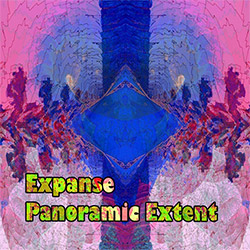
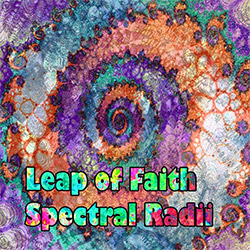
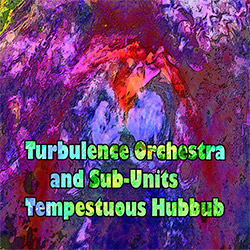
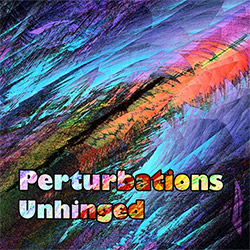
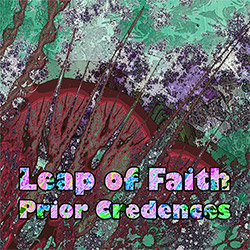
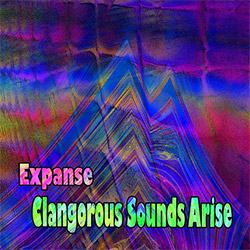
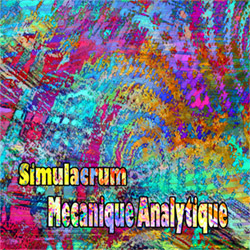
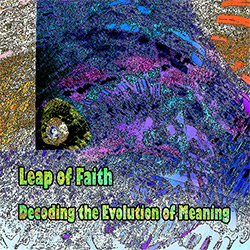
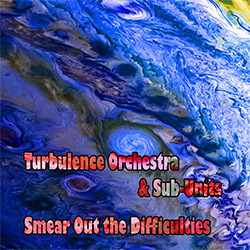
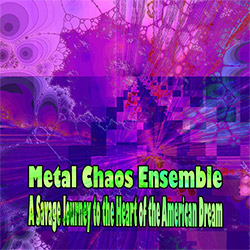
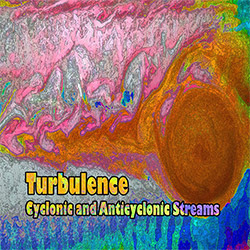
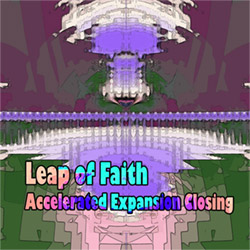
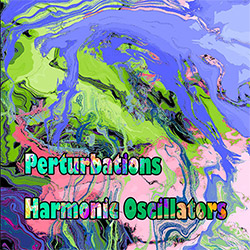

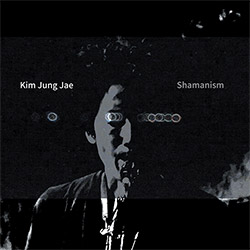
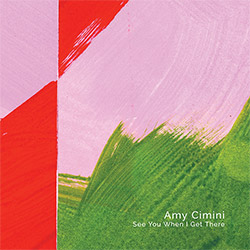
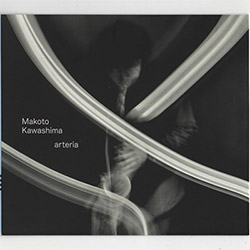
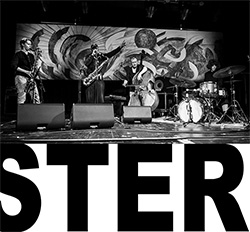
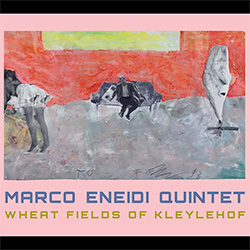
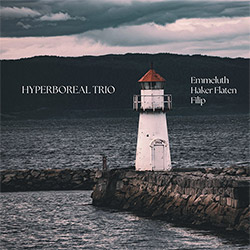
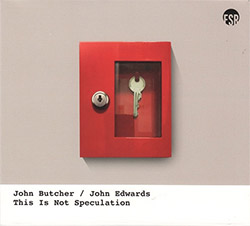
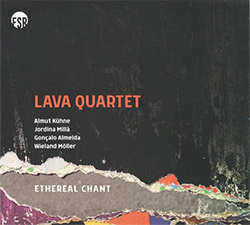
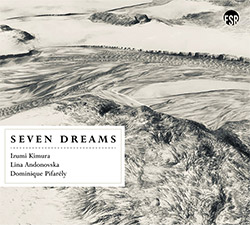
![Deupree, Jerome / Sylvie Courvoisier / Lester St. Louis / Joe Morris: Canyon [2 CDs]](https://www.teuthida.com/productImages/misc4/36404.jpg)
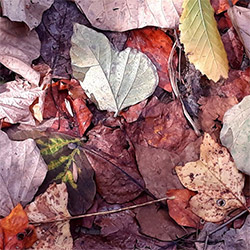
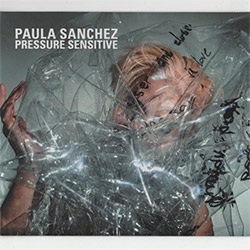
![Eternities: Rides Again [CASSETTE]](https://www.teuthida.com/productImages/misc4/36247.jpg)
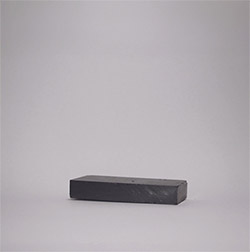
![Lopez, Francisco: Untitled (2021-2022) [2 CDs]](https://www.teuthida.com/productImages/misc4/36438.jpg)
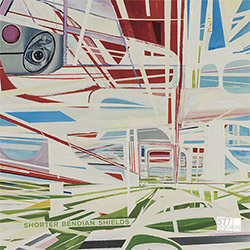
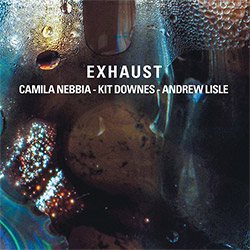
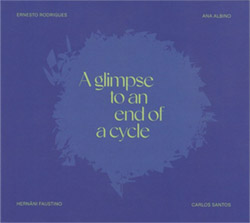
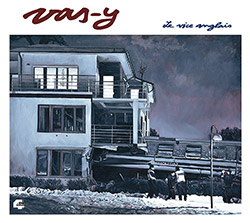
![Eventless Plot | Haarvol: The Subliminal Paths [CASSETTE + DOWNLOAD]](https://www.teuthida.com/productImages/misc4/36232.jpg)


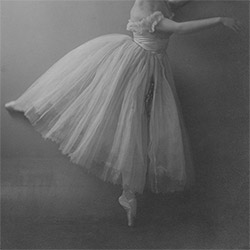

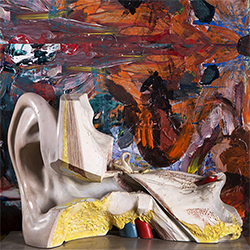
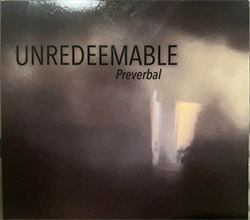
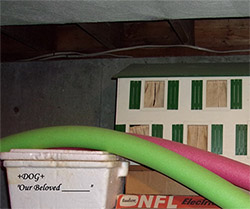
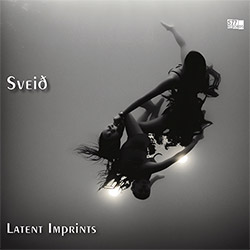
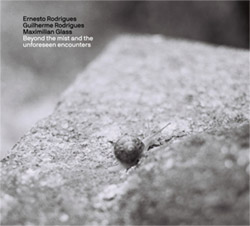

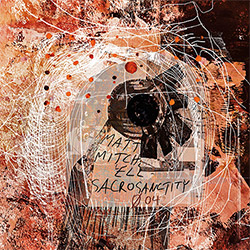
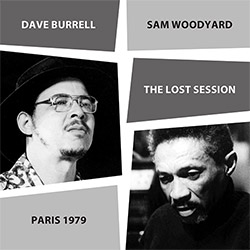
![Eventless Plot | Francesco Covarino: Methexis [CASSETTE + DOWNLOAD]](https://www.teuthida.com/productImages/misc4/36231.jpg)
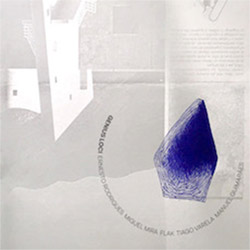
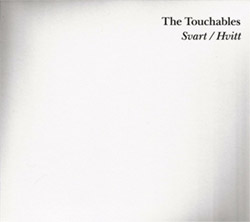
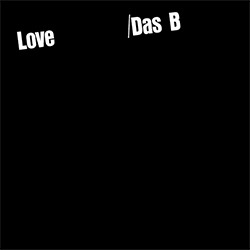
![Das B (Mazen Kerbaj / Mike Majkowski / Magda Mayas / Tony Buck): Love [VINYL]](https://www.teuthida.com/productImages/misc4/36329.jpg)
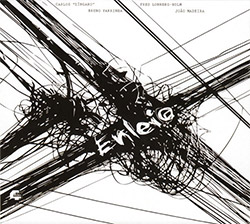
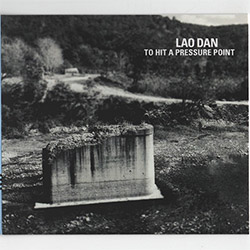
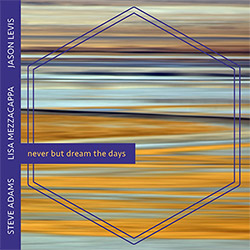
![Hemphill Stringtet, The: Plays the Music of Julius Hemphill [VINYL]](https://www.teuthida.com/productImages/misc4/36409.jpg)
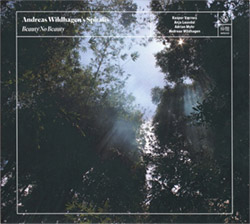
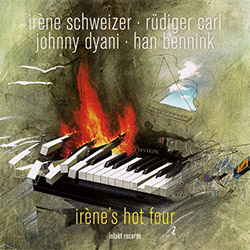
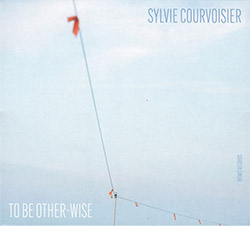
![Halvorson, Mary Septet: Illusionary Sea [2 LPS]](https://www.teuthida.com/productImages/misc4/17952.jpg)
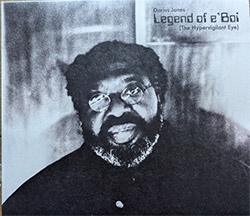
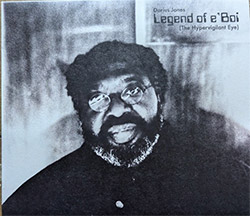
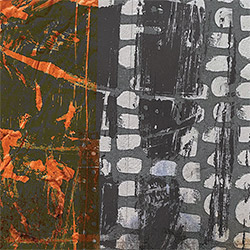
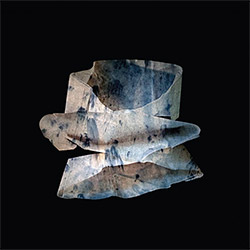
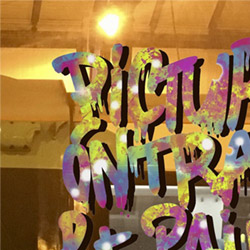
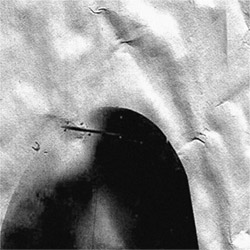
![Money : Money 2 [2 CDs]](https://www.teuthida.com/productImages/misc4/35894.jpg)
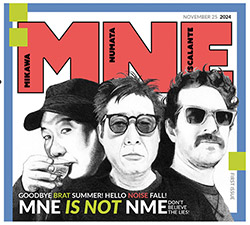
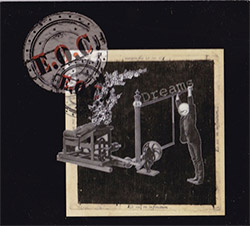
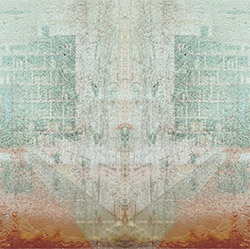
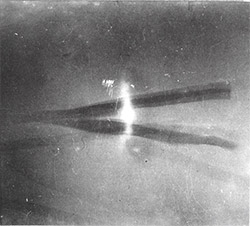
![Klinga, Erik: Elusive Shimmer [VINYL]](https://www.teuthida.com/productImages/misc4/36258.jpg)
![CHANGES TO blind (Phil Zampino): Volume 9 - I Wave on a Fine Vile Mist [CD + DOWNLOAD]](https://www.teuthida.com/productImages/misc4/36061.jpg)

![Wallmart / Rubbish: Asset Protection [split CD]](https://www.teuthida.com/productImages/misc4/35900.jpg)
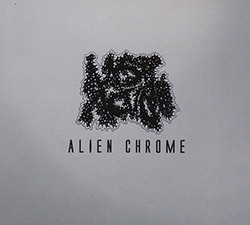
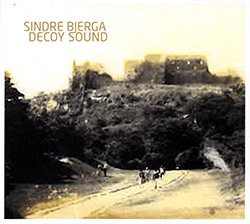
![+Dog+: The Family Music Book Vol. 5 [2 CDs]](https://www.teuthida.com/productImages/misc4/35897.jpg)
![Kuvveti, Deli : Kuslar Soyledi [CASSETTE w/ DOWNLOAD]](https://www.teuthida.com/productImages/misc4/36107.jpg)
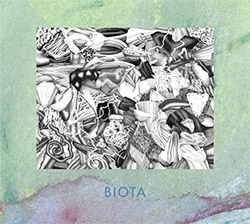
![Nakayama, Tetsuya: Edo Wan [CASSETTE w/ DOWNLOAD]](https://www.teuthida.com/productImages/misc4/36105.jpg)

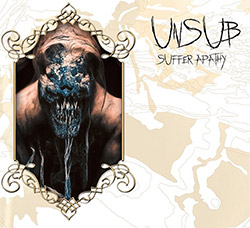
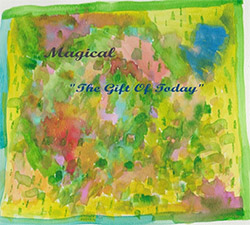
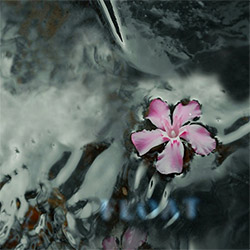
![Yiyuan, Liang / Li Daiguo: Sonic Talismans [VINYL]](https://www.teuthida.com/productImages/misc4/35957.jpg)
![Brown, Dan / Dan Reynolds: Live At The Grange Hall [unauthorized][CASSETTE]](https://www.teuthida.com/productImages/misc4/36245.jpg)
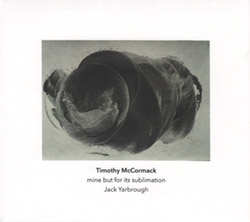

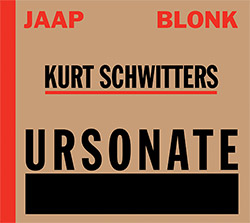
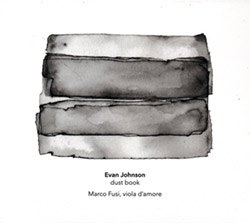
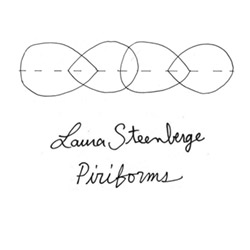
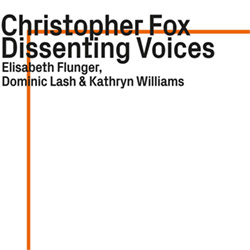
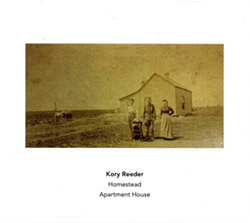
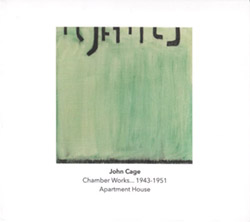
![Palestine, Charlemagne / Seppe Gebruers: Beyondddddd The Notessssss [VINYL]](https://www.teuthida.com/productImages/misc4/36206.jpg)
![Palestine, Charlemagne / Seppe Gebruers: Beyondddddd The Notessssss [NEON GREEN VINYL]](https://www.teuthida.com/productImages/misc4/36207.jpg)
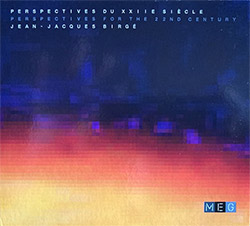
![Laubrock, Ingrid: Purposing The Air [2 CDs]](https://www.teuthida.com/productImages/misc4/35639.jpg)
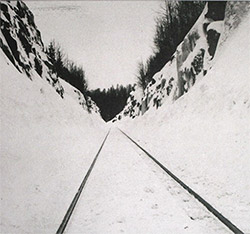
![Yoko, Ono / The Great Learning Orchestra: Selected Recordings From Grapefruit [2 CDs]](https://www.teuthida.com/productImages/misc4/35841.jpg)
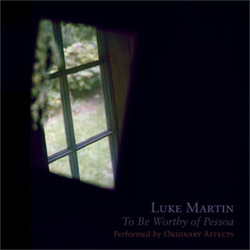
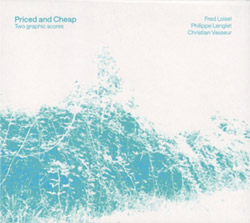
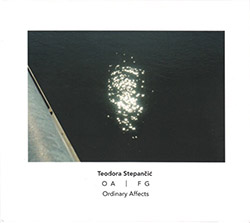
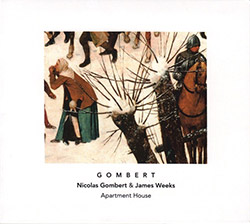

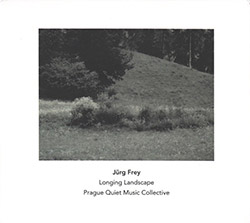


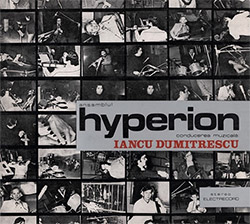
![Zorn, John / JACK Quartet: The Complete String Quartets [2 CDs]](https://www.teuthida.com/productImages/misc4/35609.jpg)

![Lonsdale, Eden: Dawnings [2 CDs]](https://www.teuthida.com/productImages/misc4/35480.jpg)
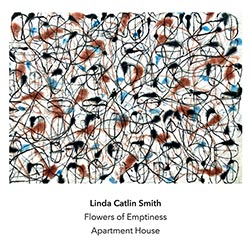
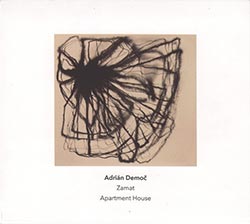
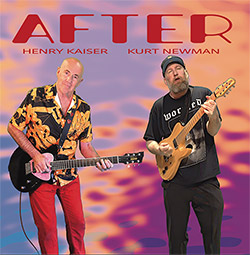
![Sorry For Laughing (G. Whitlow / M. Bates / Dave-Id / E. Ka-Spel): Rain Flowers [2 CDS]](https://www.teuthida.com/productImages/misc4/35985.jpg)

![Rolando, Tommaso / Andy Moor : Biscotti [CASSETTE w/ DOWNLOADS]](https://www.teuthida.com/productImages/misc4/36106.jpg)
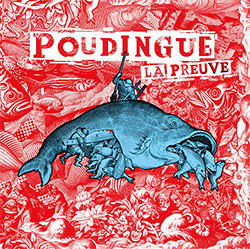
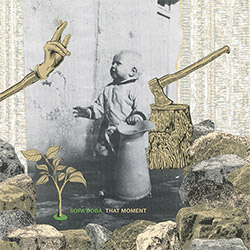
![Electric Bird Noise / Derek Roddy: 8-10-22 [CD EP]](https://www.teuthida.com/productImages/misc4/35970.jpg)
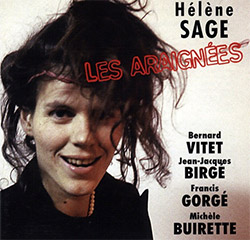
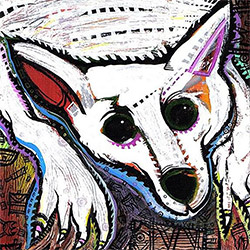

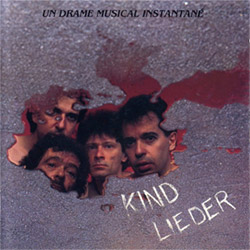
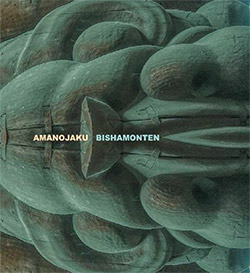
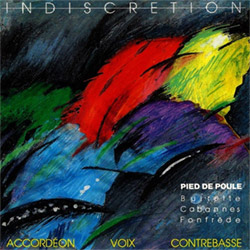
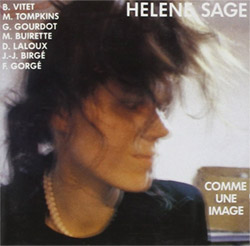
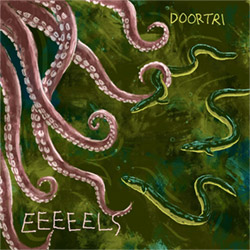
![Elephant9 : Mythical River [VINYL]](https://www.teuthida.com/productImages/misc4/34624.jpg)
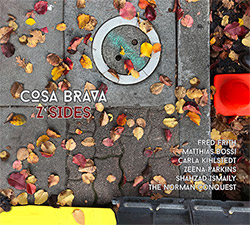
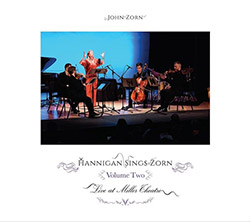
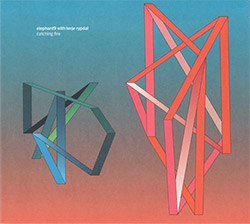
![Elephant9 with Terje Rypdal: Catching Fire [VINYL 2 LPs]](https://www.teuthida.com/productImages/misc4/35355.jpg)
![Deerlady (Obomsawin, Mali / Magdalena Abrego): Greatest Hits [VINYL]](https://www.teuthida.com/productImages/misc4/34876.jpg)
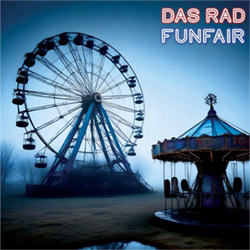
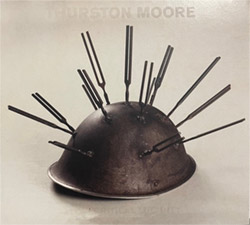
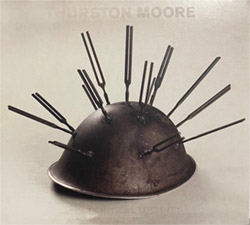

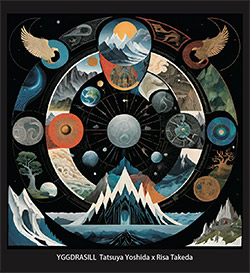
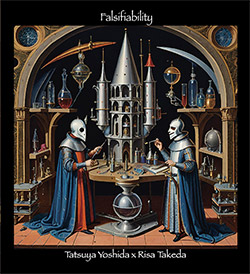
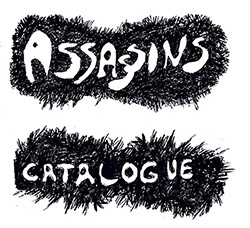
![Surplus 1980: Illusion of Consistency [CD]](https://www.teuthida.com/productImages/misc4/35069.jpg)
![Staiano, Moe: Away Towards the Light [VINYL + DOWNLOAD]](https://www.teuthida.com/productImages/misc4/35037.jpg)
![Coley, Byron: Dating Tips for Touring Bands [VINYL]](https://www.teuthida.com/productImages/misc4/17906.jpg)
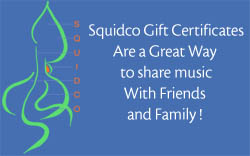
![Lost Kisses: My Life is Sad & Funny [DVD]](https://www.teuthida.com/productImages/misc4/lostKissesDVD.jpg)